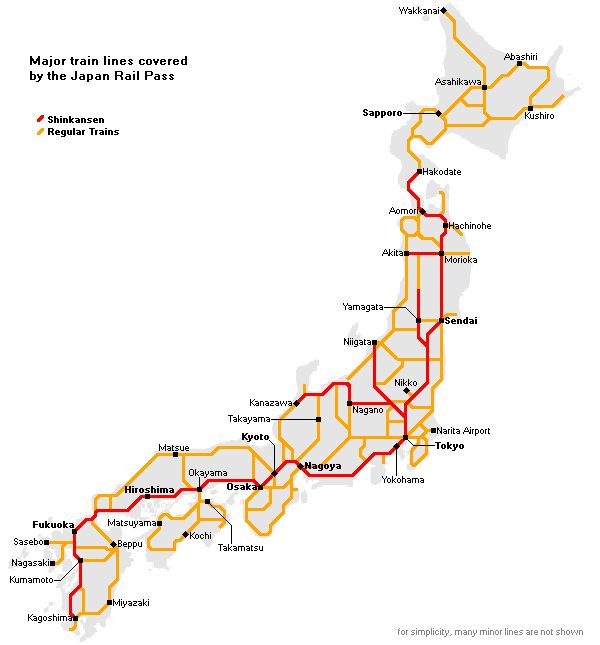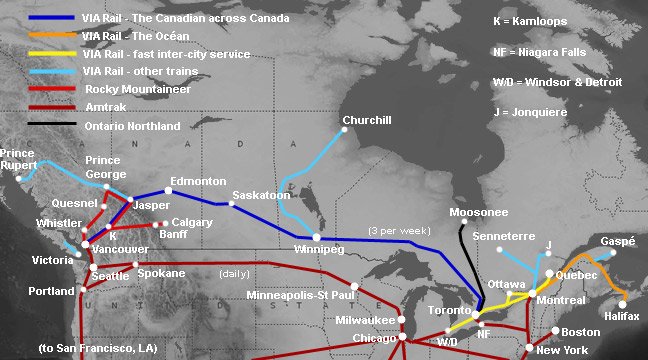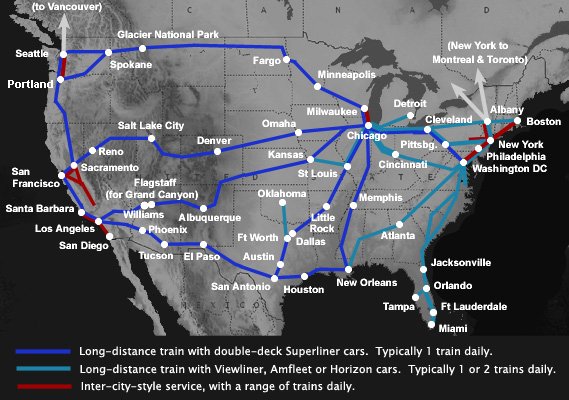The Japanese rail system is a real treat for foreign travelers.
There’s just something about rail travel. You get into a train car, sit down somewhere that can vary from a tiny elevated pod of chairs to luxurious cabins that can convert to bedrooms when night falls, and you enjoy your trip. Airline travel is less and less comfortable as leg room shrinks, and benefits like free luggage, and good meals, disappear. Car travel means spending your attention on the act of driving, and if done abroad means renting a car, potentially driving on a different side of the road, worrying about gas, and navigating new roads. There are clear benefits of train travel: it’s as simple as buying your ticket — something that can be done well in advance. As long as you can find your way to the rail station, you get to enjoy a trip along a route that is more scenic than any highway, and which doesn’t need you to do any work. Only bus travel comes close to giving you the same things train travel does.
Train travel is about more than the reduced stress though, and one of its longest-running advantages is the ability to enjoy your trip. Train tracks can pass through very scenic areas, surrounded by trees, going up and down through mountain passes, and even spending time going through towns and cities to let you experience their unique feel. There is no trip like a train trip if your goal is to enjoy the experience, as well as the destination. The Japanese know this very well, with “TV programs that follow train lines in European countries, showing viewers the many wonderful sights at each stop.”
That said, trains exist because they are useful, and Japan and the Japanese rail has a major advantage for encouraging investment in trains and rails: it’s more densely packed.
This map of Japanese rail lines covered by the Japan Rail Pass shows the density of Japanese cities, and how short some lines can be. With such a pass, you can travel all over the map for a single price (which varies depending on how many days you choose). On the Seat61 website, which provides a thorough resource on Japanese train travel, Canadian train travel, and American train travel, among many others, all as a hobby, the time for a JRPass train from Tokyo to Nagasaki is listed as taking around 8 and-a-half hours. During the trip to Nagasaki, a passenger either passes through or alongside over a dozen other cities. Compare that density to Canada, where a cross-country trip takes 4 nights, again according to the useful resource at Seat61.
The dark blue line is the cross-country Canadian trip, and along with taking four nights, you will notice it doesn’t really go across all of Canada. It starts in Toronto for one thing, and goes no further north than Edmonton. While it ends on a coast, it doesn’t start on one, and it only goes through four cities, with very few branching train routes you could jump off along the cross-country trip to try out instead. America is somewhat better off, and it’s not a coincidence that along with having roughly ten times Canada’s population, it’s also a little smaller, and even its map shows long gaps of single paths without branches.
In the USA you have a couple of options for a long-distance trip. The only thing it really doesn’t have is the variety of branches: once you’re on a route crossing the country you are basically stuck if taking long-distance rail, until you get to a coast, or the Great Lakes. It’s also not a great layout if you want to start somewhere like Spokane, and go to Houston, you’re stuck with a roundabout route instead of a straight trip. It goes without saying that these trips are also long.
The Canadian and US maps show another advantage Japan has when it comes to trains: population and shape. Japan’s small size leads to population density, which makes trains more valuable to corporations as well as passengers. Meanwhile, its shape limits options. Even if you are traveling from a fairly central point in Japan, like Tokyo, your options don’t include going east, or directly south, but are basically a choice between northward and south-west. Japan’s vaguely backward L shape lends itself to one or more main rail lines that can branch often over short distances to reach any city not along the main line.
Density, population, and shape, make Japan a haven for trains and train lovers. You can see much of the country by train, taking branching routes to any place that interests you, all possible because the shorter distances make the routes more affordable for companies.
As if there weren’t enough reasons for the otaku in all of us to go visit Japan, the luxury of Japanese rail travel to all major cities, with all the joy of a train ride, are themselves a draw. Enjoy a bento and some scenery. Day trips to see certain “holy land” sites, like a certain someone has been doing recently, is far easier in Japan than is healthy, making it all too possible for you to spend one day in Tokyo, the next in Kyoto, and then on to Osaka, or Hiroshima, or just go all-in and slowly travel north or south every day, and enjoy a trip in city after city, without having to spend a day traveling to get there. The trip potential is overwhelming, but oh so tempting.
Sources: Japan Info, Japan-Guide, Seat61

















